FreeSync and G-Sync: What You Need to Know
Adaptive sync display technologies from Nvidia and AMD have been on the marketplace for a few years now and gained plenty of popularity with gamers thanks to a generous option of monitors with plenty of options and a variety of budgets.
Start gaining momentum around v years ago, we've been closely following and testing both AMD FreeSync and Nvidia G-Sync and plenty of monitors packing both. The 2 features used to be fairly different, only after some updates and rebranding, things today have synched the two pretty nicely. Here'southward an update on everything you should know every bit of 2022.
The Skinny on Adaptive Sync
FreeSync and K-Sync are examples of adaptive sync or variable refresh charge per unit for monitors. VRR prevents stuttering and screen tearing by adjusting the refresh charge per unit of the monitor to the frame rate of the content on the screen.
Commonly you tin can but use V-Sync to lock the frame rates to your monitor's refresh rates, but that introduces some bug with input lag and can throttle operation. That's where variable refresh rates solutions like FreeSync and Thousand-Sync come in.
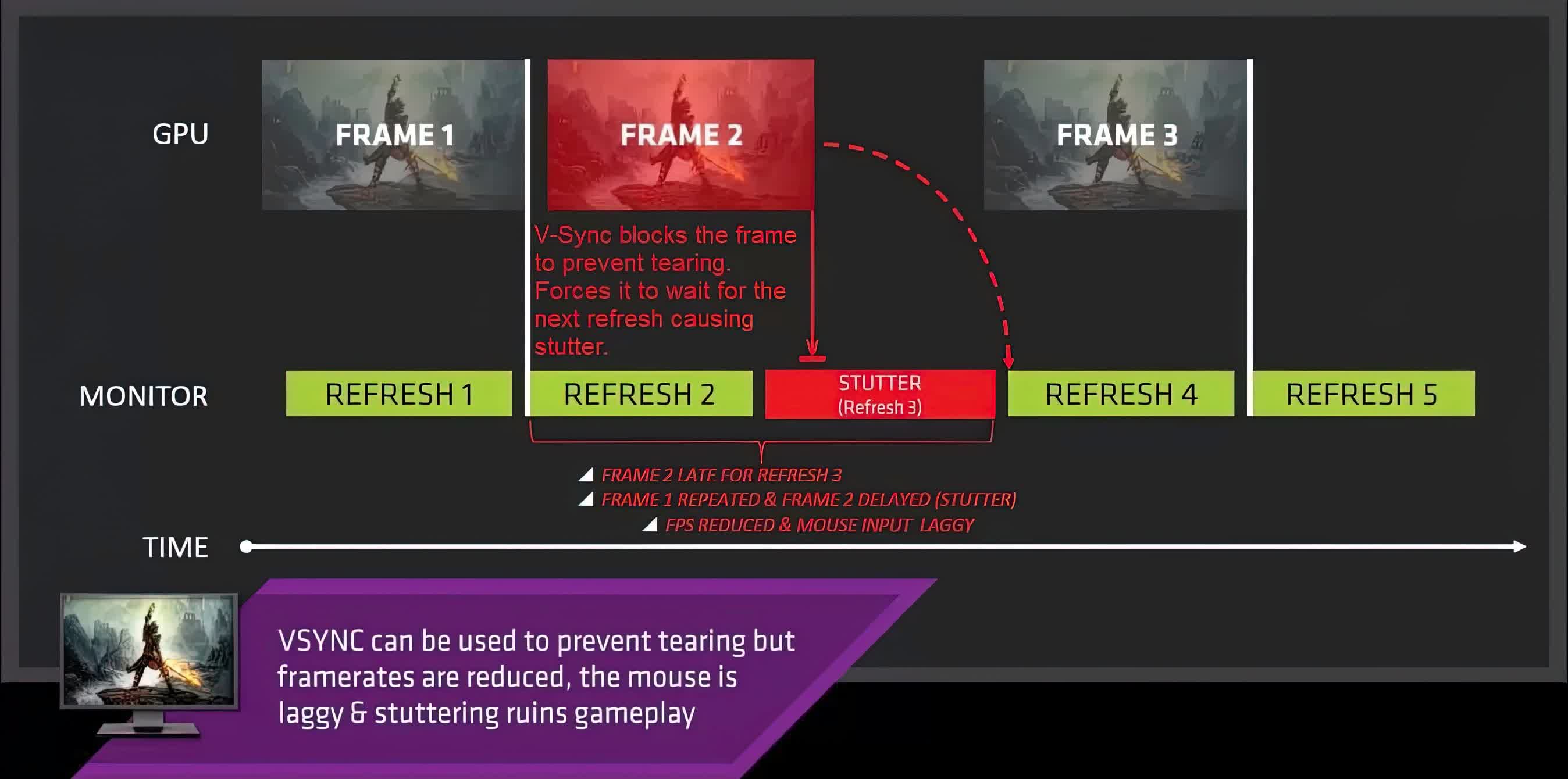
FreeSync monitors employ the VESA Adaptive-Sync standard, and modern GPUs from both Nvidia and AMD support FreeSync monitors.
FreeSync Premium monitors add a few more features similar higher refresh rates (120Hz or greater at resolutions of 1080p or higher) and low framerate compensation (LFC). FreeSync Premium Pro adds HDR support to that list.
G-Sync uses a proprietary Nvidia module in place of the usual brandish scaler and offers a few boosted features similar Ultra Low Motility Blur (ULMB) and Low Framerate Compensation (LFC). As a result, merely Nvidia GPUs can have reward of G-Sync monitors.
In early 2022 afterwards Nvidia began to back up FreeSync monitors, information technology added a few tiers to its K-Sync certified monitors. For example, Grand-Sync Ultimate monitors feature an HDR Module and the promise of higher nits rating, while regular G-Sync Monitors but characteristic adaptive sync. There are also Yard-Sync Compatible monitors, which are FreeSync monitors that Nvidia has deemed "worthy" of meeting their G-Sync standards.
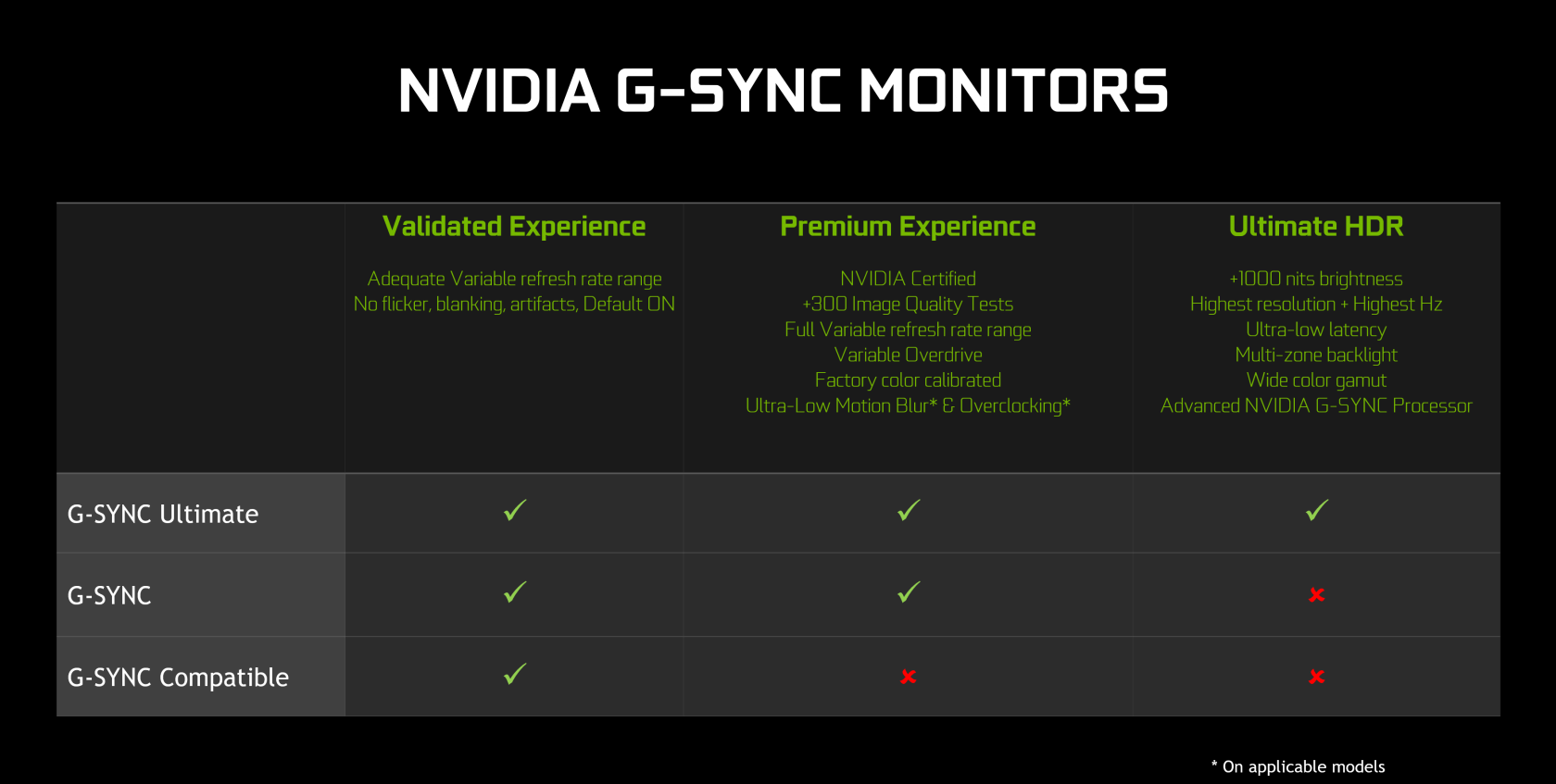
The basic goal of both G-Sync and FreeSync is to cutting downward on screen vehement through adaptive sync or variable refresh rate. Essentially this feature informs the brandish to change the monitor'southward refresh rate based on the framerate put out by the GPU. By matching these 2 rates, it mitigates the gross looking artifact known as screen fierce.
The comeback is pretty noticeable, giving low frame rates a level of smoothness on par with sixty FPS. At higher refresh rates, the benefit of adaptive sync is reduced, though the applied science still helps to remove screen tearing and stutters caused by frame rate fluctuations.
Picking Apart the Differences
While the do good of variable refresh rates is more or less the same between the two standards, they have a few differences outside of that single feature.
One advantage of G-Sync is that it continuously tweaks monitor overdrive on the fly to assist eliminate ghosting. Every G-Sync monitor comes with Low Framerate Compensation (LFC), ensuring that even when the framerate drops, there won't be any ugly judders or prototype quality issues. This feature is found on FreeSync Premium and Premium Pro monitors, but isn't always institute on monitors with standard FreeSync.

LFC works when the frame charge per unit drops below the refresh rate window, typically thirty frames per second. When this happens, the refresh rate volition become double the frame rate, so at 25 fps, the monitor will operate at 50Hz. This helps improve smoothness even at low frame rates.

Additionally, Chiliad-Sync includes a feature called Ultra Low Motility Blur (ULMB) which strobes the backlight in sync with the display'due south refresh rate to reduce motility mistiness and better clarity in high-motility situations. The feature works at loftier fixed refresh rates, typically at or higher up 85 Hz, though it does come with a small brightness reduction. However, this characteristic can't be used in conjunction with G-Sync.
That ways users need to cull between variable refresh rates without stuttering and vehement, or high clarity and low move blur. We expect virtually people to use G-Sync for the smoothness it provides, while esports enthusiasts will prefer ULMB for its responsiveness and clarity at the expense of violent.

Blur reduction depicted by Mistiness Busters
Since FreeSync uses standard display scalers, the uniform monitors frequently accept many more connectivity options than their K-Sync counterparts, including multiple HDMI ports and legacy connectors such as DVI, although that doesn't always mean that adaptive sync will work over all of those connectors. Instead, AMD has a self-explanatory feature chosen FreeSync over HDMI. This means that different M-Sync, FreeSync will allow for variable refresh rates through HDMI cables version one.4 or college.
Even so, the HDMI and DisplayPort chat takes a slightly different plough when you start discussing TVs, equally some G-Sync uniform televisions can also utilize the characteristic through an HDMI cable.
The main reason you'd want FreeSync over HDMI is that typically HDMI cables are cheaper than DisplayPort, and there'southward wider back up for HDMI in other devices, like laptops.
Furthermore, FreeSync Premium and FreeSync Premium Pro (formerly known as FreeSync two) have higher standards and features compared to standard FreeSync. While in that location are many affordable and boilerplate quality monitors with FreeSync, those with FreeSync Premium Pro are expected to be of higher quality, like One thousand-Sync Ultimate monitors.
Beyond Monitors
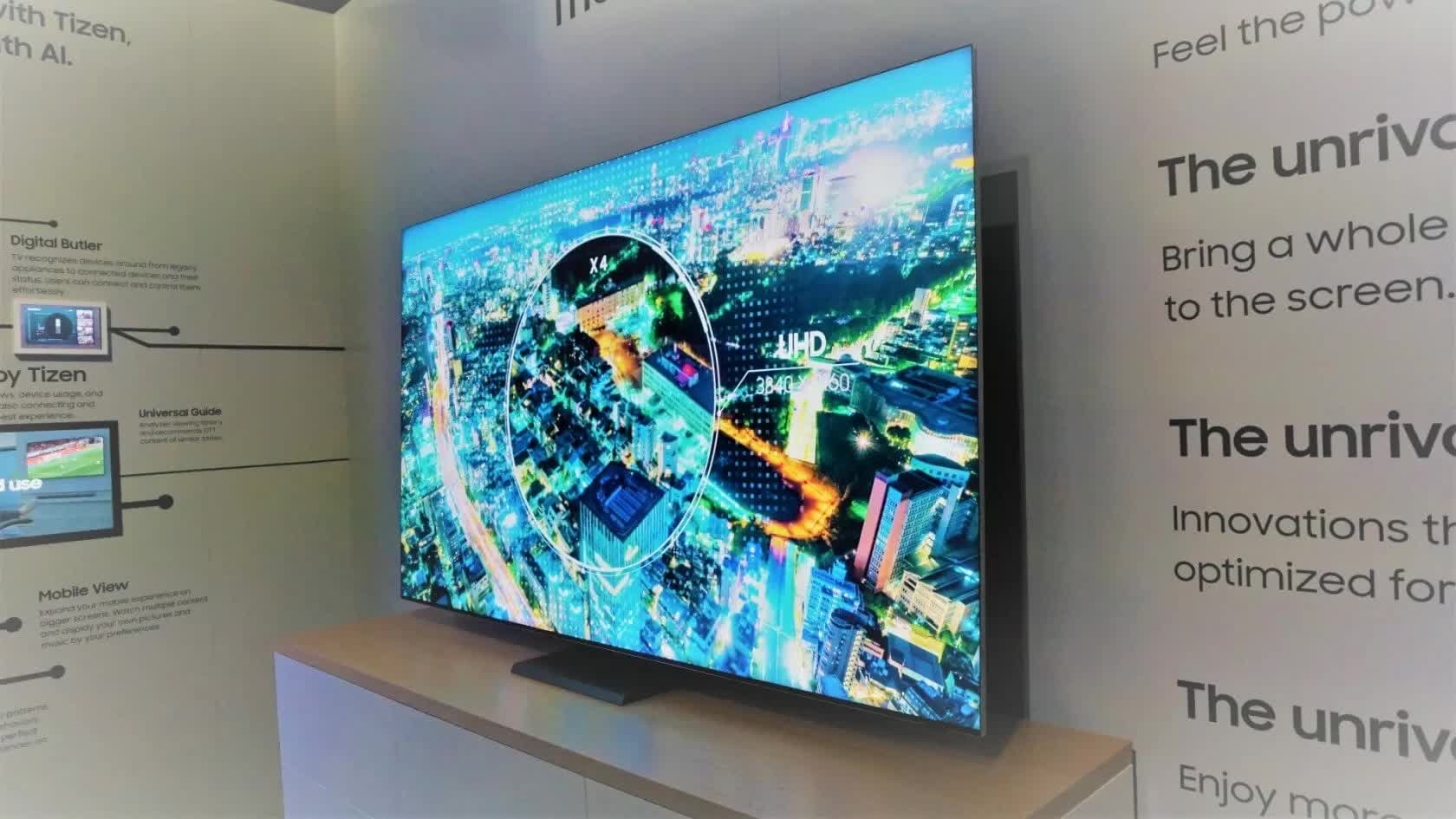
FreeSync and Thousand-Sync are plant on laptops and TVs as well. Y'all tin can notice LG OLED TVs with Chiliad-Sync compatibility, while Samsung has a few models with FreeSync Support. All y'all need to do to use these features is match them up to a supported GPU and plow on the TV'due south Game Mode.
Samsung TVs with FreeSync even support variable refresh rates and improved visual quality with the Xbox 1 X and S, also as the Xbox Series X and S. As of writing, the PlayStation 5 doesn't support FreeSync, only it does support variable refresh rates over HDMI, so the feature should exist coming through a future update.
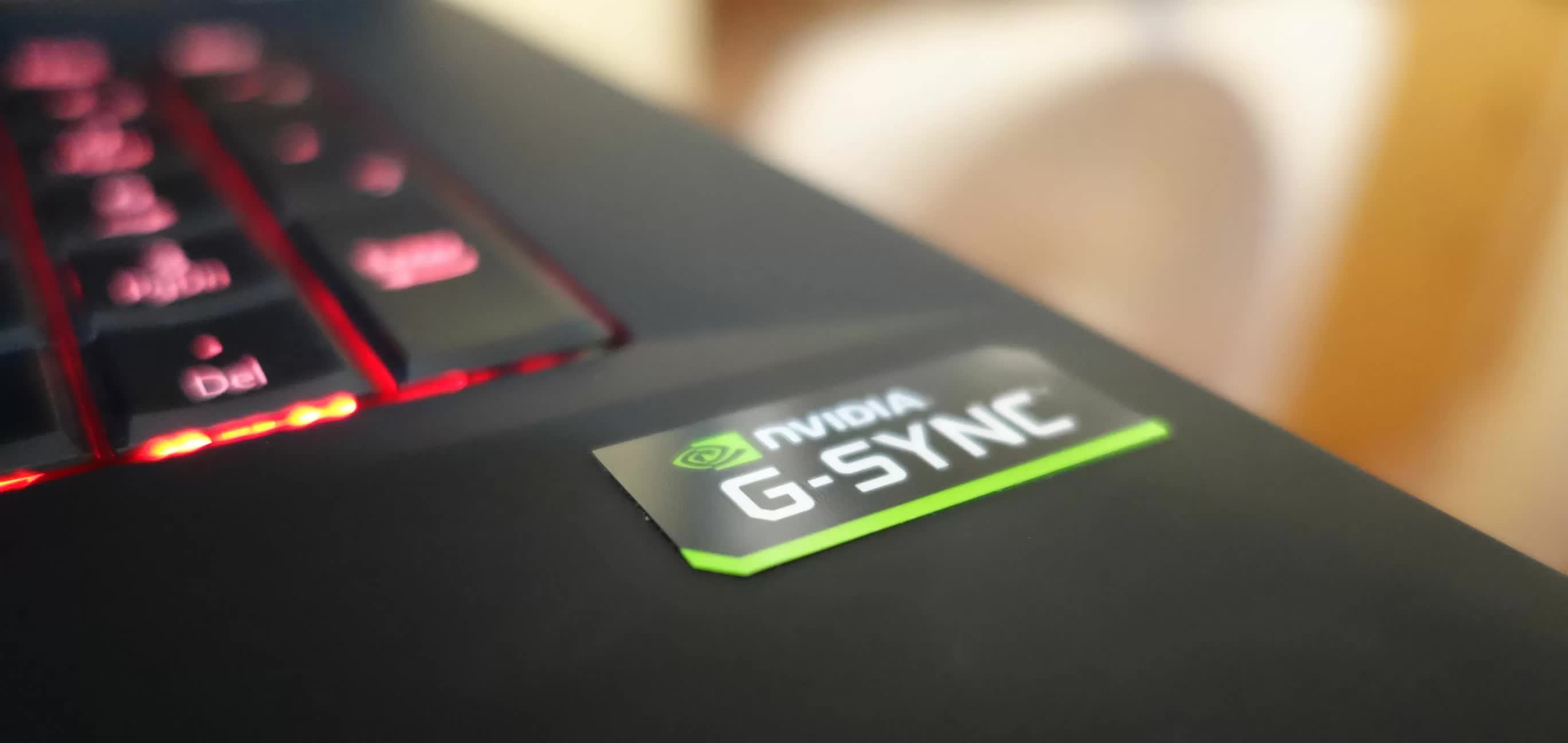
There are too laptops bachelor with screens that support G-Sync and FreeSync, meaning y'all tin get tear-free gaming on the become.
How to Enable FreeSync

To use FreeSync you need a FreeSync uniform display, and ane of the following: an AMD graphics menu or APU from 2022 or newer, an Nvidia GeForce GTX 10-series graphics card or better (you must utilize a DisplayPort cable), an Xbox One S or X, or an Xbox Series 10 or S. For FreeSync certified displays, make sure FreeSync is on through the monitor's on-screen display.
For FreeSync TVs, all y'all have to do is turn on the Game Mode, usually through the settings menu.
For AMD Radeon graphics cards or AMD APUs, you can plow on FreeSync through the AMD Radeon Software, in the Brandish tab of the Settings Card. Some recommend locking your max FPS for a smoother experience. If you're using that recommendation, you lot can utilize Radeon Arctic, to limit your max FPS to about 3 or five FPS below your monitor's maximum refresh rate.
For Nvidia graphics cards, you need the latest Nvidia Game Ready Drivers, though support for these displays started back with driver version 417.71. After the latest drivers are installed, enable FreeSync through the monitor's on-screen brandish. And then in the Nvidia Command Panel, you tin can enable variable refresh rates through the "Prepare up One thousand-SYNC" card particular.
How to Enable Yard-Sync
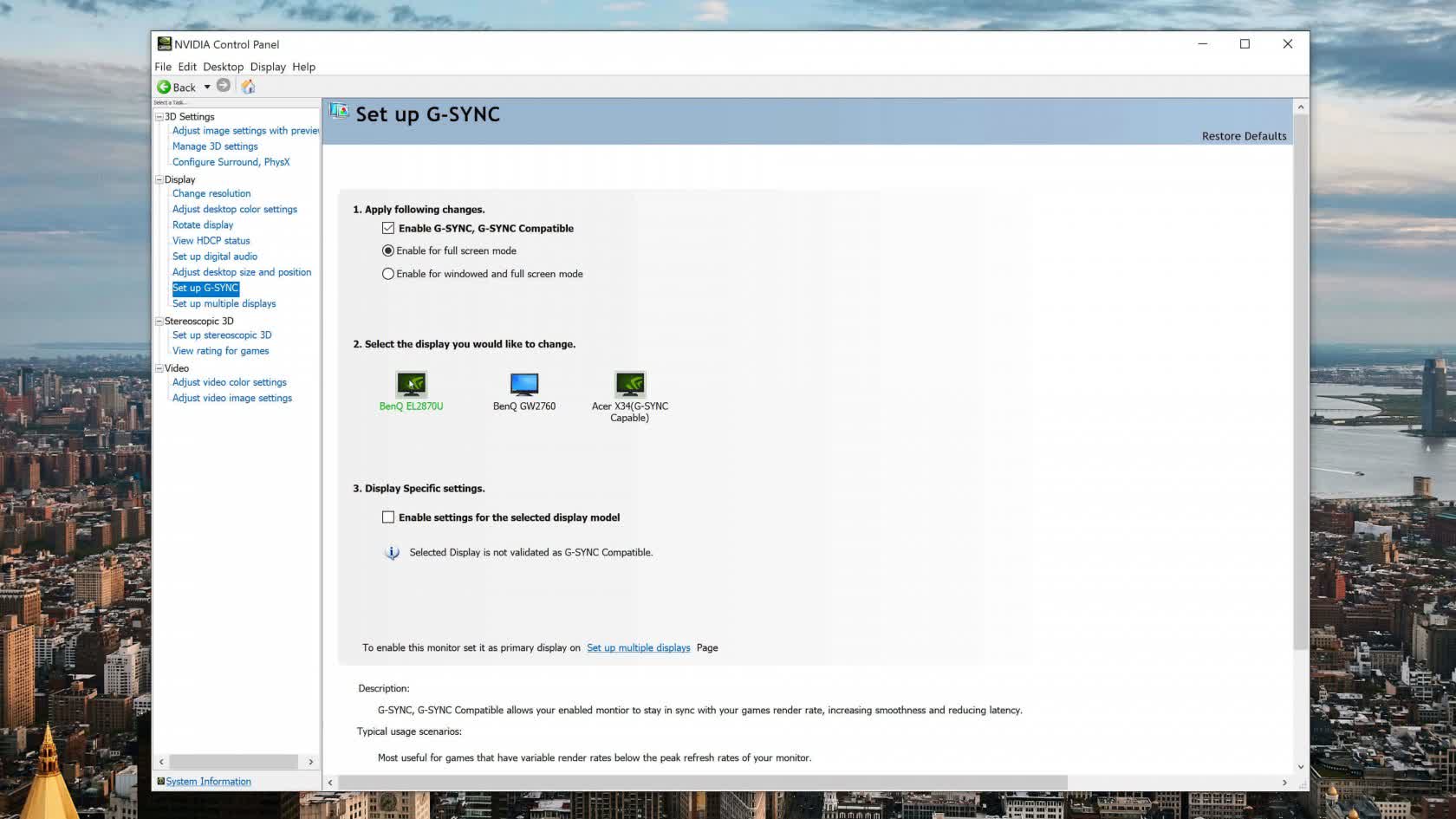
To utilise G-Sync, you demand a G-Sync certified display and an Nvidia graphics bill of fare, with the absolute minimum supported model being the GTX 650 Ti for Thou-Sync Uniform monitors, and a GTX 1050 for Thousand-Sync Ultimate.
You lot as well need a DisplayPort cable: DP 1.2 for Thousand-Sync Compatible monitors, and DP 1.4 for G-Sync Ultimate monitors.
Install the latest drivers, and head to the Nvidia Control Panel. Under Display, there should be an option to "Set G-SYNC." Tick the box to enable the setting and you're good to go.
How to check if Grand-Sync and FreeSync are turned on?
Later on enabling your monitor'southward Variable Refresh Rate feature, also as the FreeSync or One thousand-Sync setting, y'all may exist curious to encounter if information technology's actually working.
Run your favorite games, and proceed an eye on the image quality and responsiveness. When the frames of your game become as well high, or too low, you should experience fewer screen tears, stutters, or input lag if the setting is enabled properly. Depending on your monitor's refresh rate window, you may yet get some of those artifacts at sure frame rates, so don't get too worried if that happens.
Another way to check is with the Nvidia Pendulum demo, which was designed for G-Sync.
In the past, it was V-Sync or zero, with gamers having to make up one's mind between high-frame rates or image quality. But thanks to the work of AMD and Nvidia pushing image standards higher, gamers can enable variable refresh rates, and enjoy loftier frame rates, first-class response times, and smooth gameplay with no interruptions in image quality.
Recommended reads:
- Best PC Gaming Monitors
- Brandish Tech Compared: TN vs. VA vs. IPS
- The Best Monitors
Shopping Shortcuts
- Samsung Odyssey G7 32" on Amazon
- Dell UltraSharp U3219Q 32" 4K on Amazon
- HP Omen X 27 on HP Store, Amazon
- LG UltraGear 27GN950 27" on Amazon
- Samsung Odyssey G9 49" Curved on Amazon
- LG 27GL850 on Amazon
Source: https://www.techspot.com/news/88532-freesync-g-sync-explained.html
Posted by: fosterretion1985.blogspot.com


0 Response to "FreeSync and G-Sync: What You Need to Know"
Post a Comment